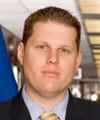
During a crisis is not the time to try and build relationships with the media—those connections must already be established in order for your organization's message to reach a wide audience through credible media.
David Sommers, director of public affairs for the Los Angeles County CEO, knows a thing or two about media relations: He spent three years as television journalist and a political producer with NBC affiliates in the Northwest. Now, he guides media relations, social media and other strategic communications initiatives for the nation's largest municipal government.
Sommers, who will be a speaker at PR News' Digital PR Summit on February 27 at The Westin in San Francisco, shared some of his insights about PR media relations.
PR News: How has the emergence of social media changed how organizations communicate with the media?
David Sommers: As a local government agency, our communication strategies have never been very proactive, because we are the only game in town. We have no competitors. There are no other products for consumers to choose from. Residents are going to come into our hospitals, community centers and County offices seeking services even if we do absolutely zero promotion or messaging. Our approach (or lack thereof) to media relations has been nearly identical.
It is an organizational culture that we have been working hard to overhaul, and we’ve had many recent successes. Social media leadership has been essential to that success. Younger residents represent the largest growth in our population base, and they are digital natives. They have never known a time when they didn’t have access to social media to instantly engage with anyone, including government agencies.
The same is true with the reporters that cover us an organization. Social media integration into their reporting and daily workflow is a universal reality and they expect that government will interact and respond as quickly they do. Any organization should look to meet that same expectation head-on.
PR News: What can PR Pros do with Twitter and LinkedIn to boost their media relations efforts?
Sommers: Our recent efforts have really focused on Twitter—using it as a monitoring platform to listen in on what the high-propensity reporters routinely covering County issues are saying about us, or about issues we are involved in. We’ve built several private lists in Twitter of reporters and media outlets of interest to us, and we strategically engage them. If I see what they’re writing about, I look for opportunities to connect them with a subject-matter expert. Anyone can find similar opportunities to engage. Look for ways to make a reporter’s job easier. Anticipate their needs. Twitter is a powerful resource for anticipating the needs of the media.
PR News: What rules—spoken or unspoken—must be followed in using social media for media relations?
Sommers: Don’t overwhelm members of the media. In the same way that any reporter will tell you how they get too many pitches, too many unsolicited emails, too many emails that don’t get to the point—it’s the same approach on social media. Don’t tweet at a reporter all day. Don’t DM them all day. Think through your engagements tactically. What is the most value-added you can offer a reporter via your social media efforts.
PR News: What's the biggest challenge in using social media to connect with the media?
Sommers: Getting media to pay attention to your efforts. It’s easy to be defeated when you develop a strategy and a message, then your outreach nets you a small number of followers and very little social media interaction or viral lift. Anyone can have a social media presence—what are you doing to offer unique opportunities and information to the media?
PR News: What’s one concept/idea you want to impart on the conference attendees?
Sommers: There are many simple things you can do to improve your media relations via social media, and the best part is that the easiest steps are free and require minimal effort. I’m looking forward to sharing more of these ideas and answering questions during our discussion in San Francisco.
To learn more from media relations professionals like David Sommers, register now for PR News’ February 27 Digital PR Summit San Francisco.
